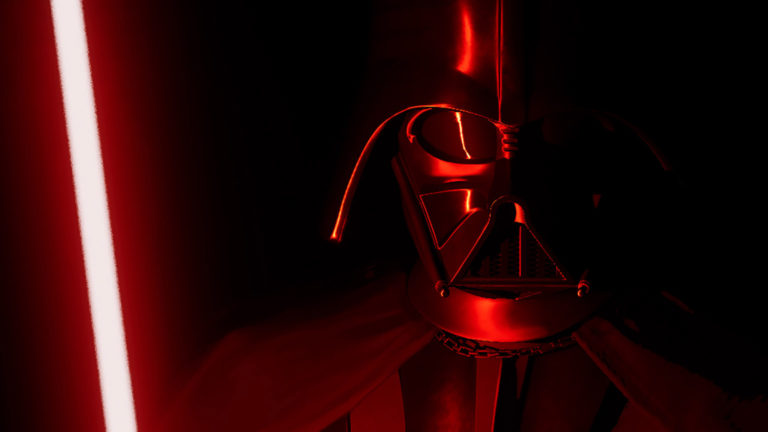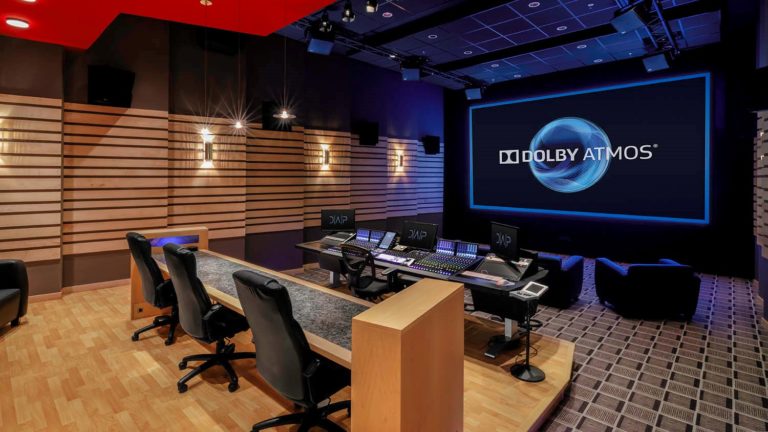When Matching Sound to Picture, Not All the Solutions are Technical
Photo: Renée Zellweger in a scene from Chicago
I See Dead People – But Not At First
Sometimes the mixer has to wait for the director to divulge a key piece of information before a scene’s audio mix can come together — something that might be eminently apparent to the director, but not to everyone else. That was the case when Scott Millan was mixing a crucial scene in Sam Mendes’ 2002 Road to Perdition in which a young son hides in his father’s car as a brutally tense situation plays out. Conrad Hall’s cinematography was highly detailed and textured – individual raindrops slapped by the windshield wipers, dancing shadows from wind through the trees, the quotidian conspiring with the terrible.
The scene seemed to call out for an equally detailed sound dressing, yet twice Mendes came in to hear a playback of the sequence and decided that it was “too busy.” Only after that second try, though, did the director disclose a key fact: the scene is a flashback, and everyone in it except the boy is dead. Suddenly, the literalness of the sound mix could be replaced by a much simpler, enveloping soundscape, one that didn’t change perspective as the picture did. “Once Sam said that, everything snapped into place,” says Millan. “We realized that the scene needed an emotional sensibility instead of a visceral one. But we couldn’t know that until he told us.”
Later in the same film, Millan was able to suggest a solution to a critical scene that seemed to have puzzled Mendes. At the end, Tom Hanks’ hero squares off against his nemesis, played by Paul Newman. Mendes took the scene on a roller-coaster ride, alternating points of view from afar and up close, real and unreal, but the sound and the picture never seemed to gel. Finally, Millan had an idea that might be unexpected, coming from a sound mixer. “I said, ‘Why don’t we just take all of the sound out, except the music?’” he recalls. “When Hanks and Newman come face to face, the strength of the scene will carry it.” At the end of the day, Mendes still seemed uncommitted to a direction. But the next morning, when Millan walked onto the stage, Mendes said simply, “Just do it.”
“When a director picks a sound mixer to work with, it’s no different than a musical artist choosing another musician to work with,” says Millan, who has mixed many sonically complex films, including American Beauty, Gladiator, and all three Bourne films. “A filmmaker expects to be challenged creatively by his teammates when the moment calls for it. It has nothing to do with technology and everything to do with creativity.”
Getting Creative
It takes a certain type of composer to let mixers literally chop up the score, but that’s what Mychael Danna did on director Mira Nair’s 1996 film, Kama Sutra: A Tale of Love. It’s the kind of creative freedom that mixer Dominick Tavella appreciates. It certainly helped the flow of the film.
“We were unsatisfied with some of the music cues, in terms of where they were sitting in the picture,” says Tavella, describing one particular five-minute-long cue as a “monster.” But since the tracks were individually available on a 48-track playback deck, Tavella set to work cutting and remixing the cue into what would become eight separate cues that could be more precisely and concisely placed into the same five minutes of film. “Mychael was fine with it,” he recalls. “It’s situations like that, where the composer or the director is less structured, that a mixer can get artistically creative as well as technically creative.”
Tavella points out that the degree of structure is a function of how a director or composer likes to work. “Some directors have very specific ideas on how the sound should be placed and used in a film, and it’s my job to give them what they want. But there are also situations where the director routinely works collaboratively with the mixers, and I enjoy that,” he says. Then, he shares the secret heresy harbored by many supposedly gear-happy audio engineers: “Sometimes the technical part of sound is, in a way, uninteresting. It makes you enjoy the creative moments that much more.”
Tavella often gets that collaborative opportunity with certain directors he regularly works with, including Jim Jarmusch, for whom he has mixed all films in the last decade and then some. “It’s a very collaborative environment to work in, and Jim encourages everyone to participate,” he says. An illustration of that was the film Ghost Dog: The Way of the Samurai, scored by Wu-Tang Clan leader RZA. Tavella and others had input on one particular scene in which Ghost Dog, played by Forest Whittaker, turns on a car radio. The music from that slowly moves into the surround-audio field, becoming the actual score to the scene — transformed from diegetic to non-diegetic sound. “It was Jim’s idea but the execution was collaborative,” he recalls. “Jim will set the direction we move in, but there’s a lot of flexibility and everyone is welcome to make suggestions. Creativity needs an environment of trust to be workable, and Jim trusts the people he works with.”
Even in highly structured film situations, such as the musical Chicago, a creative way was needed to make the transitions from reality to fantasy in the individual vignettes comprised by the film. “[Director] Rob Marshall had very specific ideas about the pacing of the film, but those transitions needed creative elements that were on the level of the rest of the film,” says Tavella. He worked together with music and dialog mixer Mike Minkler on finding the transitional elements. An example of how they succeeded is found in the “Cellblock Tango” vignette, where Renée Zellweger hears water dripping and the sound of a guard’s footsteps outside her prison cell.
The seemingly random, percussive sound effects begin to take on a rhythm pattern and then, over the course of a half-minute, they morph into some of the instruments used in the musical score — the water drops become a high-hat cymbal, the footsteps become a bass drum. “The technique for doing it was pretty straightforward, but the creative aspect was in things like how quickly or slowly do you want the transformation to go? Which instruments first?” he says. “It was a painstaking process. Mike and I did four or five temp mixes over the course of five months before the final mix, rehearsing the transitions.”
The Audio Blank Check
Last year, mixer Marc Fishman was handed the audio equivalent of a blank check by Anthony Hopkins for his auteur venture Slipstream, which he wrote, directed and scored. “He said, do whatever you want. Throw stuff up against the wall and see what sticks,” recalls Fishman, who says the experience, while liberating, was also a little anxiety-provoking. “As mixers, we’re used to listening and taking direction from the director, then finding ways to technologically achieve the goal. A director might not be able to state a vision clearly in a technical sense; I’ve had directors say to me, ‘Make it sound purple.’ We have to act as the translators.”
Slipstream had its share of technical issues to resolve – Hopkins’ edgy jump cuts required tenacity to follow and the production audio was less than perfect. But what really threw Fishman for a loop was how jarring it was to step into the shoes of the director, becoming the one who makes the subjective decisions moment to moment, taking the initiative on every move. “We had no limitations, and that can be a little scary,” he says. “I was now the one who had to say, ‘Make it sound purple,’ and then figure out how to do it. There are things we did on the film that, listening back to them, I have no idea how to recreate. But looking back on it, I still consider it the best work I ever did.”
The emotional ambiguity of Slipstream might have been its saving grace, allowing almost any creative response to its audio mix to be the right one. (We’ll never know – the film did less than $3,000 at the box office before slipping quietly onto DVD.) Fishman says it goes the other way with comedies, especially the formulaic ones like his recent outings for Baby Mama, Superbad and Nacho Libre. “The creators of those films tend to get locked into the Avid mixes based on what tested well [in pre-release focus groups],” he explains. “The goal there is to not let music or sound effects get in the way of the dialog and jokes.”
Situations like Slipstream don’t come along that often, but dramas do offer some creative flexibility for the mixer. In the Academy Award-winning Crash, the iconic scene in which Matt Dillon’s character rescues Thandie Newton’s from a burning car was at first a dense thicket of sound effects and music. “[Director] Paul Haggis was trying to push the characters together emotionally, so we tried it first as a scary scene with a lot of elements,” Fishman explains. “It wasn’t working. So my co-mixer Adam Jenkins and I decided to try going the other way, pulling everything out except the music, and looking for the one or two sounds that would be that much more effective because they were out there with nothing else around them. They turned out to be the sound of the car exploding into a fireball and the sound as she’s pulled from the car. It was an artistic decision as much as a technical one. And it worked well.”
Did you enjoy this article? Sign up to receive the StudioDaily Fix eletter containing the latest stories, including news, videos, interviews, reviews and more.









